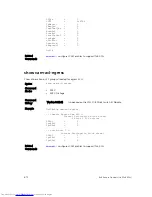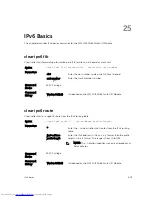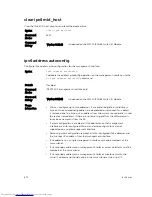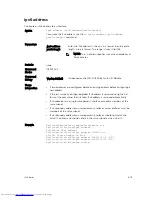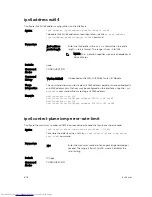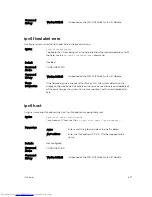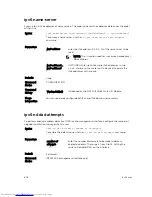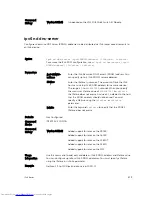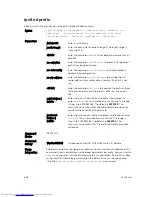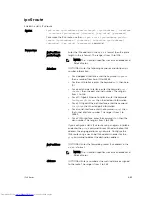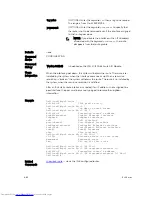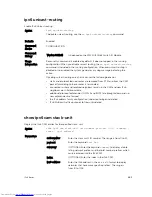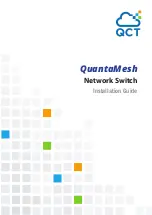
• Use the
no permit {
ipv6-protocol-number
| icmp | ipv6 | tcp |
udp}
command
Parameters
ip-protocol-
number
Enter an IPv6 protocol number. The range is from 0 to 255.
icmp
Enter the keyword
icmp
to filter internet Control Message
Protocol version 6.
ipv6
Enter the keyword
ipv6
to filter any internet Protocol
version 6.
tcp
Enter the keyword
tcp
to filter the Transmission Control
protocol.
udp
Enter the keyword
udp
to filter the User Datagram Protocol.
count
(OPTIONAL) Enter the keyword
count
to count packets the
filter processes.
byte
(OPTIONAL) Enter the keyword
byte
to count bytes the filter
processes.
dscp
(OPTIONAL) Enter the keyword
dcsp
to match to the IP
DCSCP values.
order
(OPTIONAL) Enter the keyword order to specify the QoS
priority for the ACL entry. The range is from 0 to 254 (where
0 is the highest priority and 254 is the lowest; lower-order
numbers have a higher priority). If you do not use the
keyword
order
, the ACLs have the lowest order by default
(
255
).
fragments
Enter the keyword
fragments
to use ACLs to control packet
fragments.
log
OPTIONAL) Enter the keyword
log
to enable the triggering
of ACL log messages.
threshold-in-
msgs
(OPTIONAL) Enter the
threshold-in-
msgs
keyword
followed by a value to indicate the maximum number of ACL
logs that can be generated, exceeding which the generation
of ACL logs is terminated with the
seq
,
permit
, or
deny
commands. The threshold range is from 1 to 100.
interval
minutes
(OPTIONAL) Enter the
keyword
interval followed by the time
period in minutes at which ACL logs must be generated. The
interval range is from 1 to 10 minutes.
monitor
(OPTIONAL) Enter the keyword
monitor
when the rule is
describing the traffic that you want to monitor and the ACL
in which you are creating the rule is applied to the monitored
interface.
Defaults
Not configured.
668
IPv6 Access Control Lists (IPv6 ACLs)



















